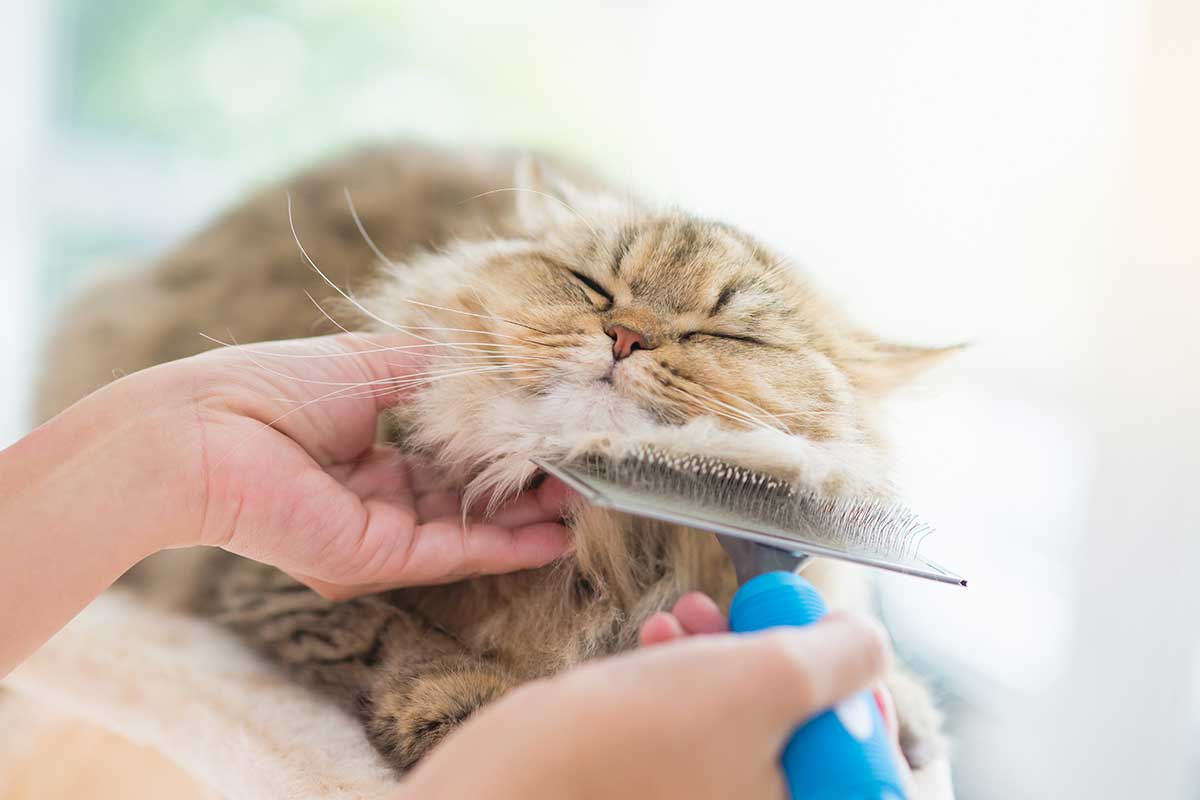My beautiful 12-year-old black cat Rama has always taken life seriously. We know nothing about his background prior to adopting him nine years ago, but I clearly remember the shelter staff trying to steer me away from him. Rama moved like a small panther in the wild–nervous, with a bit of insecurity, and not open and friendly. It’s taken years of work with him to get him comfortable with being handled. Brushing was something Rama simply couldn’t, or wouldn’t tolerate. At the sight of a cat grooming tool, he’d make an irritated noise and run away. If we tried to brush him with the tool, no matter how gently, he’d hiss and jump down from the table.
However, within the last year, my husband and I have made great strides in getting Rama to enjoy being brushed. Here are my thoughts on what I think is working, and why.
Body Language And Timing
Rama needs to be in a quiet, relaxed mood if we are to have a chance of success with brushing. He is food oriented, and if he is hungry, he’ll be agitated and he’s not going to tolerate something (such as brushing) that doesn’t seem to indicate that food is on the way. So make sure the timing gives you the best chance of success with a brushing attempt.
As for body language, Rama sometimes gets very relaxed and languorous. It’s a lot like the body language you see when your cat head butts you or rubs against you or a household item. Study your cat. When does body language indicate that he’s most approachable? When Rama starts moving in that languorous way, I know that he’ll be much more open to any body contact.
Start Small
We discovered that Rama loved to rub against the brush with the side of his head, much the way a cat does when rubbing or scenting a person or object. So we let him enjoy that, and we let that be the extent of “brushing” at first. Quietly, without rushing it, we tuned into his body language. If he seemed relaxed, we’d make the brush stroke a little longer. Rama would let us know if we were going too far; he’d make an irritated noise and we’d back off. We’d start again with the brush against the side of the head, which he enjoyed.
By reading his body language and being aware of his mood, we were able to gently take brushing further and further. We’ve never brushed his belly, as he hates that. Rama also likes to be alone (i.e., no other cats around) to enjoy things such as cuddling, brushing, and playing, so we’d make sure none of the other cats were nearby.
Use what you know about your cat and his or her body language to help make progress with brushing. Where and how does your cat feel most safe and secure, and how does he demonstrate that? How can you make brushing pleasurable? Can you make it feel like petting (assuming your cat likes to be stroked)? Could the gentle use of your hand or a soft towel imitate brushing and eventually get your cat used to being groomed with a real brush? Be creative, and try to work with your cat’s preferences and quirks.
Make the cat think it’s his idea
Once we got Rama to enjoy brushing, my husband experimented with putting the brush, bristles up, on the table where we usually brushed him. Rama got the idea and leaned into the brush, marking it and rubbing it with his chin and the side of his head. Sometimes he’d get so enthusiastic that he’d knock the brush off the table. He’s learning to associate the brush with something he enjoys, and we’re continuing to stretch the process to full-body brushing to the extent that Rama allows.
Observing your cat, knowing her limits, and making an experience fun and safe are all possible keys to success when trying to get your cat to like, or at least tolerate, brushing.
This article was reviewed/edited by board-certified veterinary behaviorist Dr. Kenneth Martin and/or veterinary technician specialist in behavior Debbie Martin, LVT.
Catherine Holm is the award-winning author of cat fantasy fiction and cat-themed memoir. She lives in Vermont with her husband and five well-loved cats. Learn about her work at www.catherineholm.com.








